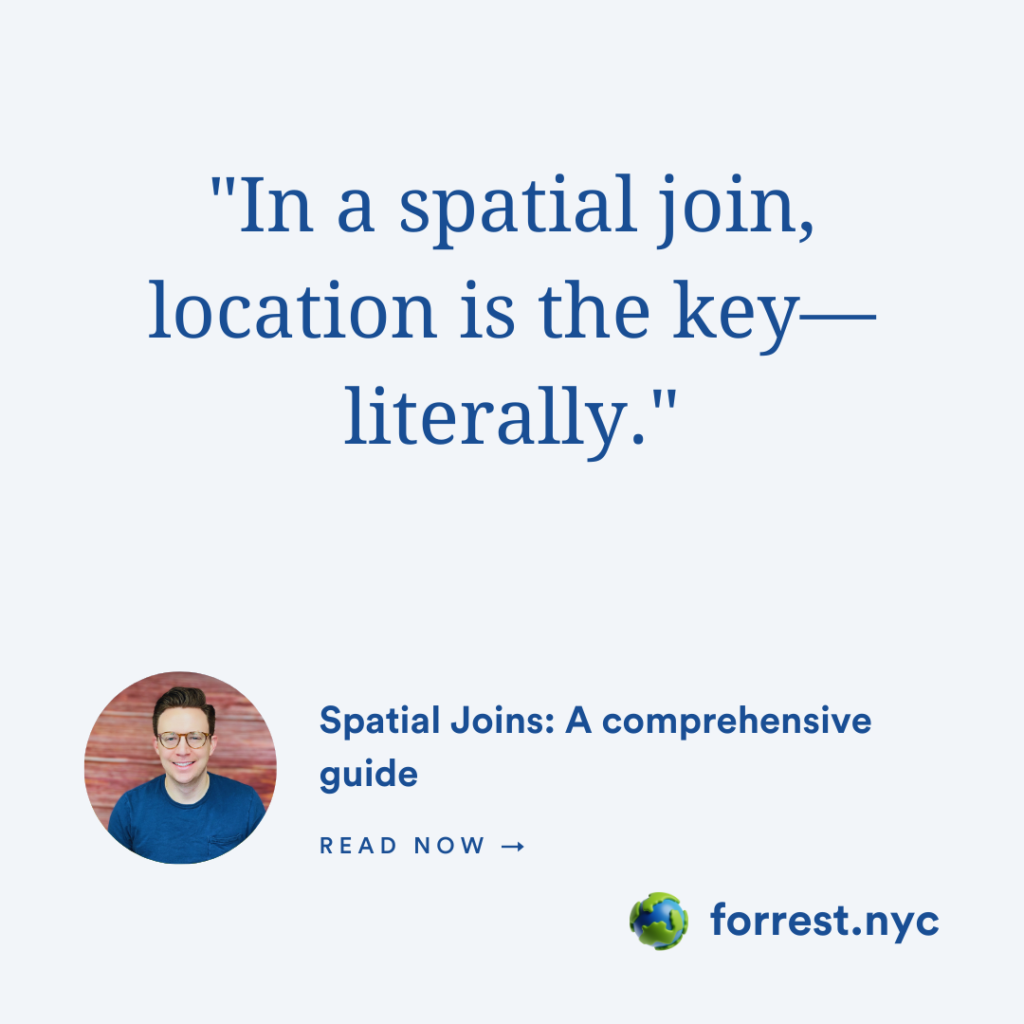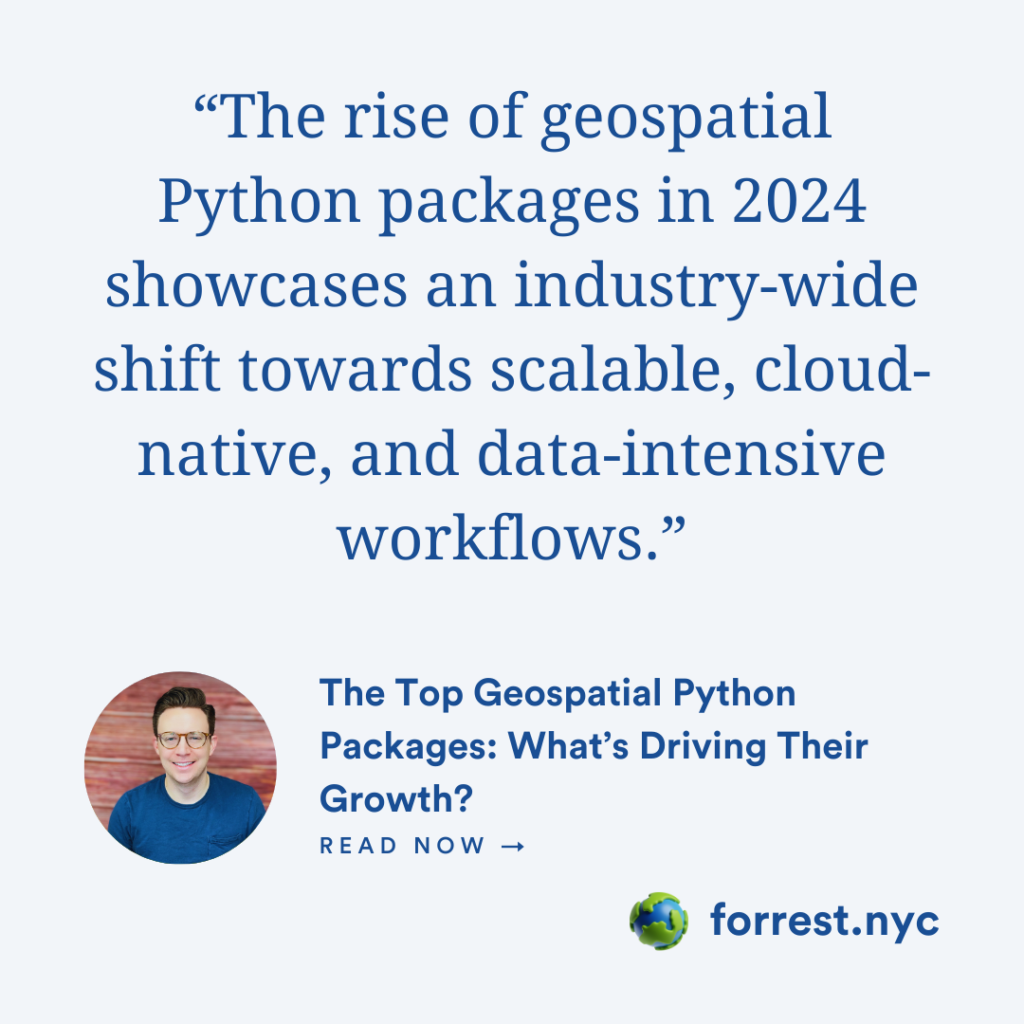Geospatial data can be stored and analyzed using a variety of tools, databases, query engines, and frameworks. Choosing the right tool depends on the scale of your use case, from individual exploration on a laptop to enterprise-level deployments, and each technology has a point where its benefits taper off. The good news for you is […]
Scaling GIS Workflows with COGs, Airflow, and Apache Iceberg
TOP OF THE STACK What we need to do with COGs COGs (Cloud-Optimized GeoTIFFs) are one of the most promising tools we have for making raster data truly cloud-native. They let you stream just the pieces you need, work remotely, and plug into modern geospatial systems without downloading giant files. But after working closely with […]
Spatial Joins: A comprehensive guide
Spatial joins combine data based on location instead of a common key. In a spatial join, attributes from one dataset are attached to another by evaluating how their geometries relate in space. For example, you could join a list of customer coordinates to sales territories by finding which territory polygon contains each customer point. This […]
The Top Geospatial Python Packages: What’s Driving Their Growth?
Geospatial Python has seen an explosion in adoption, with several key libraries surpassing 10 million downloads this year. As geospatial analysis becomes increasingly critical in data science, urban planning, environmental monitoring, and AI applications, understanding why these libraries are growing can provide insight into where the industry is heading. Here’s a breakdown of the most […]
From Desktop GIS to Cloud: A Beginner’s Roadmap to Modern GIS Tool
Modern GIS is changing fast. If you’ve been working with QGIS, ArcGIS, or any other desktop GIS tool, you’ve probably hit some limitations—datasets getting too big, processing times slowing down, and collaboration becoming a challenge. The good news? The cloud offers a way forward. But how do you make that transition? How do you go […]





